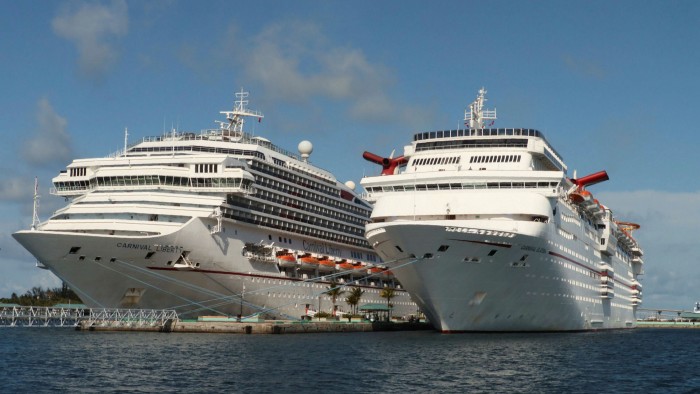Companies need to plan, not panic, over threat of end to cheap debt

Roula Khalaf, Editor of the FT, selects her favourite stories in this weekly newsletter.
It’s the end of the world as we know it and, mostly, everyone feels fine. Credit markets have so far been blithe to the potential end of the easy money era. But signs of stress in the market’s lower reaches are challenging the assumption that the calm can hold.
On one hand, it should be no surprise that hawkish signals from central banks are not causing a year-end dash for cash. Following a record 12 months for leveraged finance issuance, corporate borrowers at the top of the pile had already locked in low funding costs — long before the central banks signalled a pullback on stimulus.
“In the high-grade market, corporates already raised more liquidity than they needed during 2020 due to uncertainty over the impact of the pandemic,” says Daniel Lamy, managing director of European credit strategy research at JPMorgan. “Any increase in high-grade supply is likely to be a function of M&A volumes rather than refinancing needs.”
Resilient investor demand and benign market conditions have made issuers comfortably numb to the threat of higher rates. Whereas 2020 was about reinforcing balance sheets against the unknown, the driver this year has been junk bonds used to fund leveraged buyouts. Issuance has dropped among investment-grade companies, which have been choosing instead to repay last year’s precautionary borrowing.
“We had a similar phenomenon in 2009 with six months of very heavy issuance followed by a very sharp drop in activity,” says Juan Valencia, credit strategist at Société Générale. “We don’t expect the drop in activity to be as pronounced, but corporations have cash and, even if yields rise, the cost of funding remains much lower than five or 10 years ago. So there’s no rush, really.”
Soren Willemann, head of European credit strategy at Barclays, says companies had taken advantage of record-low yields and termed out debt with longer maturity profiles than normal — so they had little need to issue even longer bonds. He also notes that, historically, finance directors needed more to worry about than a risk that money may be more expensive later.
“We do see pre-emptive funding ahead of well-known risk events, such as rate hikes, elections and the like, but not really in response to broader expectations of changes to funding costs,” Willemann points out. “The current environment is no different.”
Urgency is just as lacking in a subinvestment grade market where defaults are the lowest they have been since 2007. The speed of the rally from March 2020’s point of maximum despondency meant that severe balance sheet damage was limited to sectors acutely affected by the Covid pandemic. For the rest, a relaxation of rules around equity raisings proved enough to stave off the existential threat.
There are exceptions. Cruise ship operator Carnival has been struggling all year to reduce interest costs, having issued notes with a 11.5 per cent coupon in April 2020 just to keep afloat. But its story is atypical. Appetite for junk meant Ocado, the rarely profitable online grocer, was this month able to upsize a bond sale from £400m to £500m that pushed out a credit line from 2024 to 2026 on better-than-expected pricing of 3.875 per cent. Its notes due for retirement yield 4 per cent.

Borrowing costs would need to rise far more sharply than markets have anticipated to cause widespread problems further down the line. Approximately €75bn of euro and sterling high-yield bonds are callable this year, and around €60bn in 2022, at average coupons of 4.7 per cent and 4.5 per cent respectively, JPMorgan data show.
Yet the risks for 2022 should not be underestimated. Junk bonds are dependent on credit spreads: the difference in yield between a benchmark rate and a debt instrument of the same duration. Rate hikes during a period of stagflation would therefore deliver a double whammy for a subinvestment grade market currently riding an M&A wave.
It is a fear that is already showing among investors, who have been pulling cash out of high-yield credit funds in recent weeks. Costs of insuring junk debt have risen to the highest since May, with higher energy prices and the slow-motion implosion of Chinese property group Evergrande heightening risk aversion.
S&P Global Ratings, in its fourth quarter US credit conditions report, says investors should be demanding much higher returns because any slip in the recovery could cause “broad havoc in credit markets”.
Companies that have grown reliant on easy money may yet regret not heeding those early warnings.
Comments